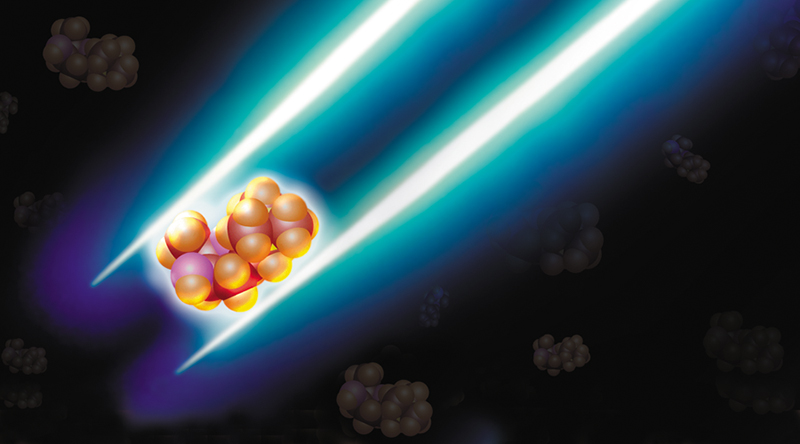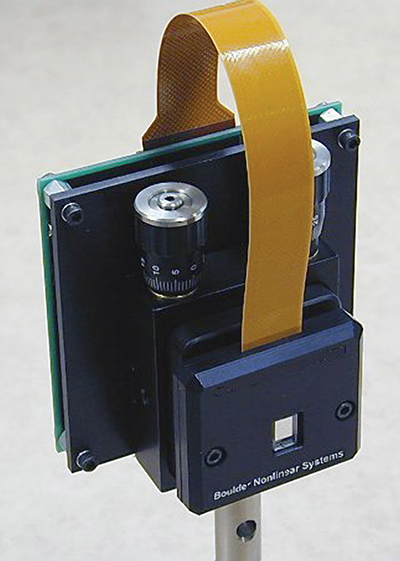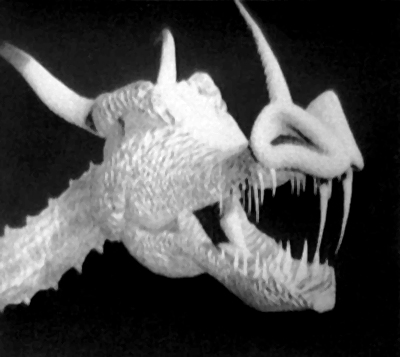
Processing at the Speed of Light
Spatial Light Modulators (SLMs) are critical elements in optical processing systems used for imaging, displaying, data storage, communications, and other applications. By taking advantage of the natural properties of light beams, the devices process information at speeds unattainable by human operators and most machines, with high-resolution results.
Boulder Nonlinear Systems, Inc., is one of the world's foremost SLM manufacturers. Founded as a research and development firm by a group of University of Colorado researchers in 1988, Lafayette, Colorado-based Boulder Nonlinear essentially grew out of a Small Business Innovation Research (SBIR) contract with the U.S. Department of Defense/Air Force a year earlier. Founders Steve Serati, the company's current chairman and chief technical officer, and Gary Sharp submitted an SBIR proposal to improve the sensitivity of coherent light lidar systems using an optical technique to suppress spatial noise. Since winning that contract over 15 years ago, Boulder Nonlinear has benefited from more than $10 million in SBIR funding, with many contracts coming from NASA's Ames Research Center, Glenn Research Center, Jet Propulsion Laboratory (JPL), and Johnson Space Center.
With vast government support through the SBIR program and a strong knowledge of optics and liquid crystals, Boulder Nonlinear was able to establish itself as a successful custom-manufacturing entity with a reputable SLM product. Its latest adaptation of government-influenced technology is the 512x512 Multi-Level/Analog Liquid Crystal SLM. The high frame rate device, developed under SBIR contracts with Ames, Glenn, and JPL, modulates light in pure amplitude, pure phase, or coupled amplitude and phase. To achieve the desired optical response, the 512x512 SLM can be filled with either a Ferroelectric Liquid Crystal, best used for applications requiring very fast modulation along the real-axis (i.e., amplitude only) or for pure phase modulation of π/2 or less, or a Nematic Liquid Crystal, best used for pure phase modulation of 2π or for applications not requiring pure real-axis modulation. All 512x512 devices are custom designed to yield the maximum modulation response at the desired wavelength.
Boulder Nonlinear also offers its customers an entry-level 256x256 SLM that delivers high-speed frame rates and sharp resolution for smaller, cost-effective applications. With help from Ames, the company is currently working on commercializing a 1024x1024 SLM, the next addition to its highly regarded SLM product line. The company also markets a 1x4096 SLM that received the prestigious Photonics Circle of Excellence Award as one of the 25 most innovative photonics products introduced in 2000. The device is primarily used as an optical phased array (OPA) for nonmechanically steering a laser beam. Through a Phase II SBIR award, Langley Research Center is currently funding a next-generation OPA that will increase scanning speed, scanning range, and the active area.
Other applications for Boulder Nonlinear's SLM line include medical research, forensics, laser printing and scanning, holography, and laser beam steering (refractive and diffractive). In medical research, Boulder Nonlinear teamed up with a client to develop "light tweezers," a unique, noninvasive technology that can lift molecules or microscopic specimens without the risk of damage. In the forensics field, original equipment manufacturers have purchased the 512x512 SLM to build optical correlators to quickly analyze reams of visual evidence, such as fingerprints, to reveal known suspects. The 512x512 SLM is crucial for high-speed processing so that forensic experts can compare a known visual pattern to an unknown visual pattern in time-sensitive situations.
Look Dynamics, located in Longmont, Colorado, incorporated Boulder Nonlinear SLMs into its optical computer product that uses light, rather than electrons, to process information such as satellite images of Earth and images of the human body. Boulder Nonlinear states that the marriage of computer logic and liquid crystal beam manipulation "creates a new universe of possibilities for manipulating light to measure, analyze and inform." Other commercial and government entities have counted on Boulder Nonlinear SLMs and liquid crystal components to replace prisms, detect bombs and track missiles (target recognition), store massive data sets on credit cards, link mobile stations to a broadband network, recognize faces, and see objects in turbulent conditions.
In its latest SBIR venture with NASA, Boulder Nonlinear is helping JPL develop SLM technology for small body exploration and Mars sample return missions. The project may also lead to new means of location recognition for spacecraft docking and landing.

Boulder Nonlinear Systems' liquid crystal Spatial Light Modulators, available in a variety of resolutions, are ideal for optical correlation, beam steering, telecommunications, defense, and medical research applications.

This grayscale image of a dragon was taken on a Ferroelectric Liquid Crystal 512x512 Spacial Light Modulator.

Without touching: A molecule is lifted by “light tweezers.” This unique technology, developed by Boulder Nonlinear Systems in partnership with a client, is noninvasive and eliminates the risk of contamination.













